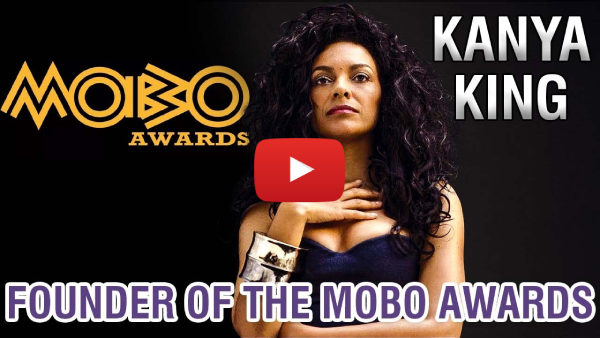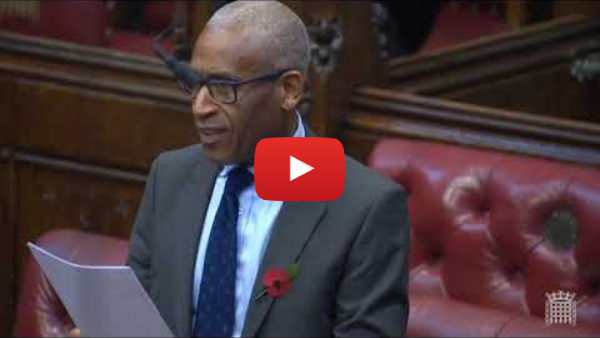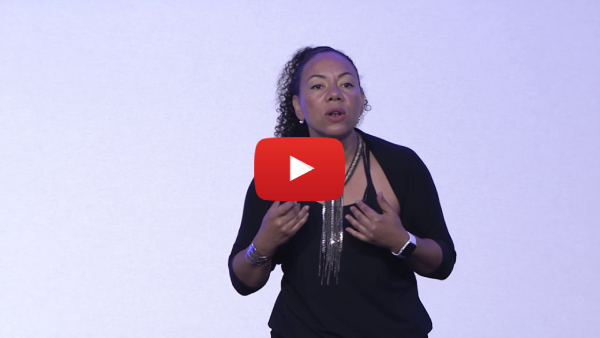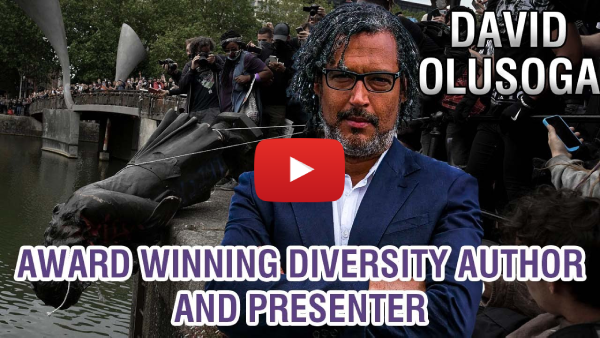How to Build an Effective Diversity and Inclusion Strategy For Your Business – Top 10 Key Tips in 2025
In today’s rapidly evolving workplace, diversity and inclusion (D&I) are strategic business imperatives, not optional add-ons. Leading research confirms that companies in the top quartile for gender diversity on executive teams are 25% more likely to have above-average profitability. Integrating D&I into core strategy correlates with stronger financial results such as higher return on assets and net income (Source: MIT Sloan Management Review). Similarly, 78% of business leaders see D&I as a competitive advantage. Inclusive organisations are more innovative, agile and profitable.
The Diversity and Inclusion Speakers Agency works with global thought-leaders whose lived experiences inspire change. Below are our Top 10 tips for building an effective D&I strategy in 2025, each illustrated by a speaker who embodies that principle.
1. Set Clear and Measurable Goals
Setting clear and measurable goals is the foundation of an effective D&I strategy. Organisations should define what success looks like, whether it’s increasing representation in senior roles, reducing the gender pay gap, or improving accessibility. Using SMART goals – Specific, Measurable, Achievable, Relevant, and Time-bound – helps create structure and accountability. These targets allow organisations to track progress, uncover hidden challenges, and focus resources where they matter most. According to Harvard Business Review, clarity in D&I planning improves focus and drives results. Without strong targets, companies risk stagnation and missed opportunities (Source: Chronus).
For example, Simon Woolley, founder of Operation Black Vote, believes measurable goals are vital for meaningful inclusion. He encourages organisations to treat D&I targets with the same seriousness as revenue metrics, tracking changes in hiring, retention, and promotion. His strategic approach often includes setting numerical KPIs, such as a 10% increase in senior leadership diversity within a year. Woolley argues that consistent measurement keeps organisations honest and accountable for real progress.
2. Secure Executive Buy-In and Leadership Commitment
A successful D&I strategy begins at the top. Without genuine commitment from senior leaders, even the best initiatives struggle to gain traction. Executive teams must do more than endorse inclusion – they must actively champion it. This includes allocating budgets, attending training, and embedding D&I goals into business strategies. When leaders treat inclusion as a core organisational priority, it signals that diversity is critical to success. According to Harvard Business Review, initiatives lacking executive buy-in often stall. By tying D&I to leadership performance metrics, organisations can drive accountability and ensure it remains a long-term, strategic focus.
Kanya King CBE, founder of the MOBO Awards, shows how leadership vision can reshape industries. She believes CEOs must fund and prioritise inclusion like any business driver. Whereas, Oona King CBE has transformed global tech firms by embedding D&I into executive goals, demonstrating that real progress begins with empowered leadership. She advises tying inclusion to board-level KPIs to ensure lasting change.
3. Conduct a Comprehensive Culture Audit
Before launching D&I initiatives, organisations must first understand their existing culture. A comprehensive audit – using surveys, interviews, and data – reveals inequities in areas like hiring, promotions, accessibility, and workplace behaviours. It provides a baseline for improvement and uncovers hidden biases that may be embedded in processes or systems. Culture audits help prioritise actions based on real insights rather than assumptions. By reviewing HR data and gathering employee feedback, organisations can diagnose issues and align solutions with real needs (Source: AuditBoard).
For example, Ade Adepitan MBE, Paralympian and TV presenter, advocates for detailed accessibility reviews across physical and digital environments. He draws attention to often-overlooked design flaws that can exclude disabled individuals. His work challenges companies to reflect on how historical bias might shape current culture.
4. Prioritise Inclusive Recruitment and Hiring Practices
Inclusive recruitment ensures organisations attract and retain top talent from all backgrounds. From the language used in job adverts to the structure of interview panels, hiring practices must be designed to eliminate bias. Strategies like blind CV screening and diverse candidate sourcing broaden access and opportunity. Inclusive hiring isn’t just about filling quotas – it’s about designing processes that welcome all identities and experiences. These practices significantly increase the likelihood of a more diverse and representative workforce (Source: Harvard Business School).
5. Implement Continuous Education and Training
Education is a cornerstone of sustainable D&I progress. A one-time training is not enough – organisations must offer continuous learning opportunities tailored to different levels and roles. From basic unconscious bias training to leadership-level workshops, layered learning helps embed inclusive mindsets. Interactive formats such as role-plays and real-life case studies improve engagement and retention. According to PwC, inclusive cultures are significantly more innovative and adaptable. Ongoing education creates shared understanding and drives behavioural change. David Olusoga connects historical inequality with present-day challenges in the workplace, using powerful storytelling to bring context and clarity. His sessions build awareness and empathy across all levels of the business.
6. Create Safe Spaces and Support Networks
Psychological safety is essential. Establish Employee Resource Groups (ERGs) and mentorship schemes to give underrepresented staff a Creating safe spaces is essential for fostering belonging and psychological safety at work. Employee Resource Groups (ERGs), mentorship programmes, and anonymous feedback tools give underrepresented staff a platform and voice. When employees feel heard and supported, their engagement, productivity, and retention increase (Source: CIPD). June Sarpong, broadcaster and D&I pioneer, has helped launch and grow ERGs across sectors, ensuring marginalised voices are amplified. She shows how structured support networks fuel change from within. Organisations must fund these networks, assign executive sponsors, and protect time for participation. Safe spaces not only improve culture -they also surface ideas and concerns that may otherwise go unheard.
7. Embed Inclusion into Everyday Business Practices
For D&I to be truly effective, it must be woven into the fabric of everyday business practices. This means evaluating internal meetings, communication styles, procurement policies, and even product design through an inclusive lens. Inclusion isn’t a one-off initiative – it should influence daily decisions across every function. Organisations should implement standard practices such as using gender-neutral language and diverse supplier networks. According to Forbes, inclusive businesses outperform competitors in innovation and customer satisfaction.
8. Foster a Culture of Belonging
Belonging means employees feel accepted, respected, and valued for their full selves – not just for how they fit in. It’s a step beyond inclusion and requires emotional commitment from leadership and peers. Normalising mental health conversations, celebrating cultural events, and encouraging storytelling builds community and trust. Baroness Floella Benjamin DBE has spent decades championing inclusion in media and education. She brings unmatched warmth and insight to the idea of belonging as a shared human need. According to Deloitte, organisations that integrate wellbeing with inclusion see significantly higher engagement. Belonging drives loyalty and performance by creating an environment where people thrive.
9. Leverage Technology and Data Analytics
Technology and analytics provide critical insights that drive D&I action. Real-time dashboards, pulse surveys, and AI tools can reveal representation gaps, promotion disparities, and employee sentiment trends. However, tech must be used responsibly – AI tools should be audited for bias, and data must lead to action. Transparent tracking builds trust and accountability while highlighting which interventions are working. As noted in Harvard Business Review, data-driven D&I strategies outperform intuition-based ones.
10. Collaborate with Experts and External Partners
No organisation can address D&I challenges alone. Collaborating with external experts – including NGOs, consultants, academics, and legal advisors – brings fresh insights and credibility. These partners can help co-design inclusive policies, run effective training, and ensure legal compliance with evolving standards. Bringing in diverse voices from outside the organisation challenges internal assumptions and sparks innovation. Treating D&I as part of a larger ecosystem – one that spans sectors and communities – leads to stronger, more sustainable outcomes.
Final Thoughts
Embedding inclusion across your organisation in 2025 is more than ticking boxes—it’s about unlocking the potential of your people and your business. These ten tips, combined with insights from our recommended speakers, lay the foundation for a culture of innovation, empathy and growth. At The Diversity & Inclusion Speakers Agency, we design impactful D&I programmes. Call us on 0203 9816 297 or complete our online contact form to discover how you can book a Diversity & Inclusion speaker to inspire lasting inclusion.
- Tips and Tricks
- 1 July, 2025








